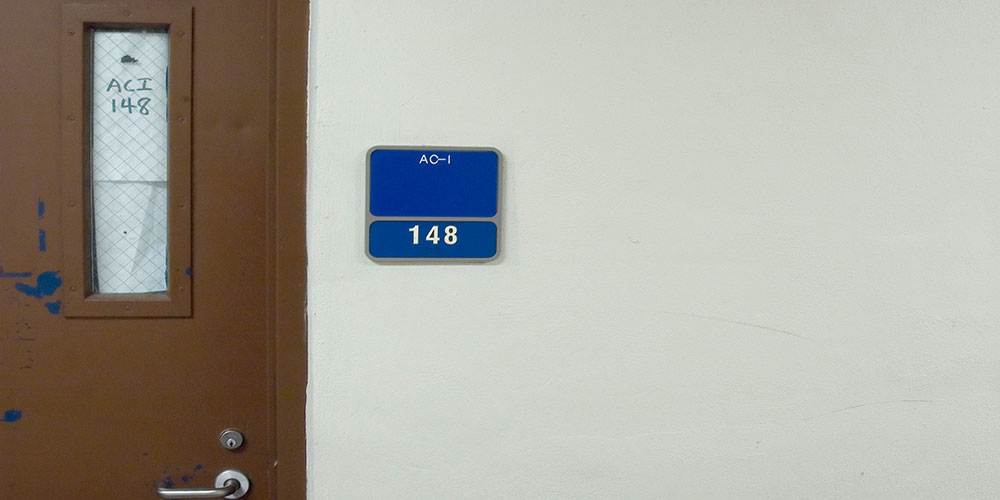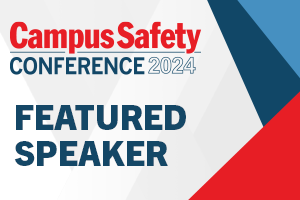College Lockdowns: 3 Access Control Considerations for Your Campus
Colleges and universities are turning to the concept of universal lockdown as a supplement to local lockdown, but is it right for your campus?

Photo: Carsten Reisinger - stock.adobe.com
College campuses implement several safety protocols, like lockdowns, to protect students and staff from a variety of hazards, including natural disasters, nearby crimes or threats, violence, and campus shootings. While lockdown protocols may vary by campus, a school lockdown generally includes locking the entrance to the room, turning off the lights, closing curtains, and hiding or sheltering away from doors and windows.
In light of concerns surrounding student safety and the need for efficient lockdown procedures in the face of such emergencies, or as a proactive measure or test, colleges and universities are turning to the concept of universal lockdown as a supplement to local lockdown. By implementing remote locking mechanisms and advanced security measures, universal lockdown aims to enhance the speed, ease, and effectiveness of securing buildings and facilities on campuses.
Additionally, universal lockdown can be used in tandem with card readers to allow access to first responders while keeping intruders out.
Universal Lockdown on College Campuses
With the increasing concern over students’ safety after high-profile mass school shootings over the years, as well as threats of nearby violence, criminal activity, and other emergencies, colleges and universities want to ensure that lockdowns can be quick, easy, and efficient. One way to accomplish this is with universal lockdown, also known as centralized lockdown.
With universal lockdown, all selected doors and facilities with connected hardware can be secured remotely. At the same time, card readers can be restricted to help prevent unauthorized access while still allowing emergency services, law enforcement, or campus security in with the right credentials. This is effective for access-controlled doors and openings.
 Paul Timm will be presenting "School Security Vulnerabilities & Solutions" at the 2024 Campus Safety Conference being held in Atlanta, July 8-10. For more information and to register, visit CampusSafetyConference.com.
Paul Timm will be presenting "School Security Vulnerabilities & Solutions" at the 2024 Campus Safety Conference being held in Atlanta, July 8-10. For more information and to register, visit CampusSafetyConference.com.Some universities are deploying remote universal lockdown devices that not only lock the rooms and deactivate campus cards, but also notify police or emergency services and send alerts throughout campus. Streamlining lockdowns with automated procedures can help relieve some stress present during emergencies.
The downside to universal lockdown is that it provides a blanket approach to lockdown that may be better addressed locally depending on the situation. Students who are not already in buildings equipped with Electronic Access Control (EAC) locks will be locked out and prevented from finding shelter.
Local Lockdown on College Campuses
Although universal lockdown is effective in securing all buildings with the push of a button, a more immediate option is needed in lockdown procedures. Universal lockdown may seem like the best option, but it’s expensive and unrealistic to use connected hardware on every building and door.
In some cases, universal lockdown may not be deployed quickly enough. Research from the U.S. Department of Justice and the Federal Bureau of Investigation has shown that 70% of mass shootings end in five minutes or less. An intruder may already be inside a building before a campus can identify the threat and lock down the correct area. Although many campuses do not have a need for card readers on the doors to classrooms or lecture halls, reducing vulnerabilities is critical.
With the use of local lockdown, an occupant can quickly lock the door from the inside while still manually overriding the credential reader where applicable. This allows the occupants inside the ability to decide who they let in, such as a student in danger in the hallway.
While both universal and local lockdown has its benefits and drawbacks, a recommended approach would be a hybrid of the two where applicable. Universal lockdown can be used as a quick first response, while local lockdown inside of classrooms and lecture halls can be used along with situational awareness and informed choices.
Status Indicators During Lockdowns
Status indicators have become an integral part of lockdown procedures. Status indicators on locks can show whether the door is locked or unlocked, by using a light, color, word, or a combination of these. The idea is to be able to assess at a glance whether the door is locked without having to approach the door or turn the handle. In the event of a lockdown, a status indicator can save precious time by displaying the locked or unlocked status to avoid confusion.
Status indicators can also aid in operating the door lock. Since just about every thumb turn or deadbolt lock you encounter may be different, it’s nearly impossible to memorize the correct way to lock the door. In moments of high stress, like lockdown, it can be especially easy to forget how to lock the door – like which way to turn the key or thumb turn. The indicator can show which direction to turn to activate the locking mechanism, which can help save precious time in stressful situations where every second counts.
As indicators make their way to more classroom doors to aid in lockdown procedures, it’s important to remember that accessibility plays a key role in these mechanisms. For example, students who are colorblind can’t differentiate between red and green, two colors commonly used to represent “locked” and “unlocked.” From far away, it would be nearly impossible for them to distinguish whether the door is locked or unlocked. Status indicators that consider those with special needs or accessibility requirements, like using red and white colors, or indicators with lights, plus large, easily distinguishable words, can make a big difference during lockdown.
As safety concerns continue to be a top priority for educational institutions, the importance of implementing effective lockdown procedures cannot be overstated. While universal lockdown offers a streamlined and centralized approach to securing campus buildings, it may not be practical or feasible for all openings. Local lockdown can provide a more immediate solution, especially for openings that do not have card readers or hardware that allows for universal lockdown. Furthermore, the integration of status indicators into lockdown mechanisms can greatly enhance efficiency and ensure clarity during high-stress situations.
Ultimately, the goal is to create a secure and inclusive environment where students, educators, and staff can focus on learning without compromising their safety. It’s important to determine the needs of your campus before implementing new technology or hardware. A security audit or assessment is an invaluable tool that can be used when looking to incorporate card reader technology or lockdown devices throughout campus.
Paul Timm, Director of Education Safety for Allegion, is a board-certified Physical Security Professional (PSP), author of “School Security: How to Build and Strengthen a School Safety Program,” and a nationally acclaimed expert in physical security.
Jeff Koziol is the Higher Education Security Specialist at Allegion. He spearheads higher education programs and supports campus software partners with the goal of enhancing user experience and improving security.
Note: The views expressed by guest bloggers and contributors are those of the authors and do not necessarily represent the views of, and should not be attributed to, Campus Safety.
If you appreciated this article and want to receive more valuable industry content like this, click here to sign up for our FREE digital newsletters!
 Leading in Turbulent Times: Effective Campus Public Safety Leadership for the 21st Century
Leading in Turbulent Times: Effective Campus Public Safety Leadership for the 21st Century
This new webcast will discuss how campus public safety leaders can effectively incorporate Clery Act, Title IX, customer service, “helicopter” parents, emergency notification, town-gown relationships, brand management, Greek Life, student recruitment, faculty, and more into their roles and develop the necessary skills to successfully lead their departments. Register today to attend this free webcast!







